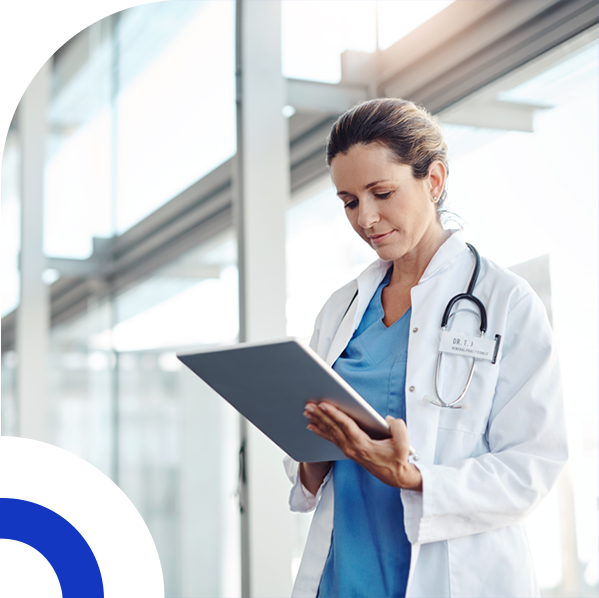Exactly How to Implement Healthcare RCM for a Smooth Profits Cycle
Exactly How to Implement Healthcare RCM for a Smooth Profits Cycle
Blog Article
A Comprehensive Overview on Just How Medical Care RCM Works to Improve Billing and Collections
Browsing the intricacies of health care income cycle management (RCM) is vital for service providers aiming to improve their billing and collections procedures. The overview unloads the complexities of RCM, from patient enrollment to accounts receivable administration, supplying insights right into enhancing each action. Incorporating advanced modern technology and standardized treatments can dramatically decrease case denials and increase settlement cycles. Yet, real challenge depends on seamlessly merging these components to enhance capital. As we explore the core components and methods that drive performance, one question remains: how can healthcare entities ideal placement themselves to flourish monetarily in an ever-evolving sector?
Recognizing Profits Cycle Administration
RCM is an important management feature that includes the whole monetary process of person treatment, from the first appointment establishing to the last repayment of the balance. It is a complicated procedure designed to identify, collect, and manage the revenue from the solutions given to clients.
The RCM procedure begins when an individual timetables a visit and prolongs with the patient's care trip, including billing and collections. An essential goal is to decrease the time in between obtaining and giving a service payment, hence enhancing the company's economic health and wellness. RCM includes various features such as individual registration, insurance coverage confirmation, fee capture, coding, claims submission, repayment publishing, and managing charms and rejections.
Secret Parts of RCM
In the world of Earnings Cycle Monitoring (RCM), comprehending its essential components is essential to attaining economic performance within medical care companies. RCM is an extensive procedure that incorporates numerous stages, each critical to making certain efficient invoicing and collections. The primary parts include person enrollment, insurance policy confirmation, fee capture, coding, claim submission, repayment posting, and accounts receivable management.


When coded, claims are sent to payers, where precision is critical to prevent denials or hold-ups - Healthcare RCM. Settlement uploading entails taping the received payments, which permits the settlement of accounts. Lastly, accounts receivable administration concentrates on tracking and addressing unsettled cases, guaranteeing timely follow-up and resolution
Each part of RCM is interconnected, and inadequacies in any kind of part can interfere with the entire cycle. Therefore, understanding these aspects is important for healthcare carriers to enhance profits and boost their economic health.
Methods for Reliable Payment

Standardizing invoicing treatments throughout the organization is one more crucial strategy. Developing clear standards for paperwork, coding, and submission aids keep consistency and conformity with governing demands. Training team routinely on these procedures ensures everyone is up-to-date with the current adjustments in invoicing codes and payer policies.
Accurate charge capture is vital in stopping income leakage. Executing regular audits and surveillance systems enables the recognition and modification of inconsistencies before they affect profits. In you can check here addition, keeping open lines of communication with payers aids to rapidly resolve any kind of disputes or misunderstandings that may arise.

Last but not least, interesting individuals early in the invoicing process by offering clear quotes and educational materials concerning their monetary responsibilities can significantly minimize complication and boost repayment timeliness. These approaches collectively add to a much more reliable and financially healthy billing system.
Enhancing Collections Processes
Provided the complexities of clinical invoicing and the selection of payer needs, boosting the collections procedure involves executing calculated actions that ensure accurate and prompt settlement of services made. Automation devices can assist in tracking case conditions, sending timely reminders to people, and moved here taking care of denials more properly.
Educating staff to comprehend the subtleties of insurance plan and invoicing codes is equally vital. This expertise empowers them to resolve billing inconsistencies promptly and connect effectively with patients concerning their financial duties. In addition, clear and clear person interactions are critical. Giving thorough descriptions of fees and supplying versatile layaway plan can boost individual fulfillment and timely payments.
Regular audits of the collections process ought to be conducted to identify areas for renovation and guarantee compliance with regulations. By evaluating information, medical care companies can recognize fads, prepare for prospective concerns, and adjust techniques accordingly (Healthcare RCM). Ultimately, a well-enhanced collections procedure not just supports financial health and wellness yet also contributes to a much more smooth experience for clients and staff alike
Optimizing Income Streams
Building upon the foundation of a strong collections process, healthcare companies can further reinforce their economic security by tactically optimizing income streams. This includes a multi-faceted approach, beginning with a thorough evaluation of existing earnings sources to determine inefficiencies and areas for development. Employing sophisticated information analytics devices enables organizations to get insights into payer mix, patient demographics, and solution application patterns, enabling data-driven choices that enhance revenue capture.
Carrying out automated payment systems can significantly decrease errors and accelerate cases refining, making certain that earnings is accumulated extra successfully. In addition, maximizing payer agreements via regular negotiations can improve repayment rates and terms, directly influencing the lower line. Branching out solution you could look here offerings, such as including telehealth or health care, can also attract a broader client base, therefore boosting profits capacity.
Another vital part is improving client engagement and fulfillment, as pleased clients are most likely to abide by treatment plans and make timely payments. Offering adaptable settlement options and transparent payment techniques can enhance collections and foster individual loyalty. Healthcare RCM. By adopting these techniques, medical care organizations can develop a more resilient financial structure, ensuring sustained development and security in an ever-changing sector landscape
Final Thought
Finally, healthcare Revenue Cycle Administration (RCM) plays a crucial function in optimizing invoicing and collections processes by integrating vital components such as client enrollment, insurance policy verification, cost capture, coding, declares submission, and accounts receivable administration. By utilizing advanced technology, systematizing procedures, and promoting patient involvement, doctor can dramatically minimize case rejections, accelerate settlement cycles, and boost capital. This comprehensive approach to RCM inevitably results in improved financial performance and sustainability for health care organizations.
The RCM procedure starts when a client timetables an appointment and extends via the individual's treatment journey, including invoicing and collections.One more important element is enhancing person interaction and fulfillment, as completely satisfied individuals are much more likely to adhere to treatment plans and make prompt repayments. Supplying versatile repayment options and transparent payment practices can enhance collections and foster person commitment.In verdict, medical care Earnings Cycle Monitoring (RCM) plays a critical function in enhancing invoicing and collections processes by integrating essential components such as client enrollment, insurance confirmation, charge capture, coding, claims submission, and accounts receivable administration. By utilizing sophisticated modern technology, systematizing treatments, and cultivating person engagement, health care service providers can significantly minimize case denials, increase repayment cycles, and enhance money circulation.
Report this page